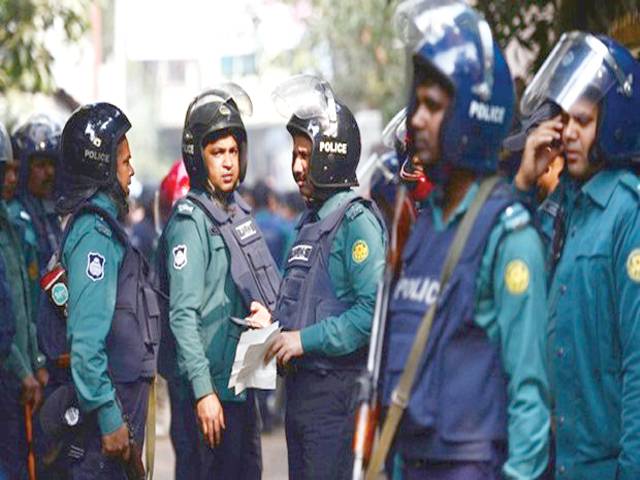DHAKA : A local television journalist in Bangladesh has been arrested for inciting unrest in one of the country’s biggest garment manufacturing zones, police said Saturday.
Nazmul Huda has been accused of “inaccurate reporting” on almost daily protests in Ashulia - home to Bangladesh’s biggest garment plants that make clothing for top Western brands like GAP, Zara and H&M - according to a senior officer.
“He is accused of inciting illegal protests, holding secret meetings with seven labour leaders whom we’ve arrested, and trying to destabilise the government,” head of Dhaka district police S.M. Shafiur Rahman told AFP.
He added that police have charged Huda under controversial information and technology laws, which have been widely used in Bangladesh to crack down on dissent.
Huda’s arrest comes after mass protests by thousands of workers prompted the closure of 55 garment factories in Ashulia, on the outskirts of capital Dhaka.
Bangladesh’s $30 billion garment industry has a woeful history of poor conditions for its four million workers, who are also among the lowest paid in the world’s textile sector.
Those in Ashulia launched a strike two weeks ago to protest the firing of 121 colleagues, and subsequently demanded their salaries be tripled from 5,300 taka ($67) - the current monthly minimum wage - to 16,000 taka.
Several hundred policemen have been deployed in the industrial zone since the strike began and at least seven people who were leading the strike have been arrested.
Garment manufacturing makes up 80 percent of Bangladesh’s exports and a prolonged interruption could have a cascading impact on the impoverished country’s economy.
Huda, a correspondent for the private ETV network, was the first journalist to report on the shoddy structure of the Rana Plaza factory, just a day before it collapsed on April 24, 2013 and killed more than 1,100 people in one of the world’s worst industrial disasters.
He shot video footage of the cracks that had developed at the Rana Plaza, which was later used as evidence in court.
He had also reported on how the owner of the rickety nine-storey garment complex forced thousands of workers to enter the building for their shifts despite cracks in its pillars, less than an hour before it caved in.
The tragedy triggered international outrage, forcing US and European clothing brands to improve deplorable safety conditions at the factories that supply them.






